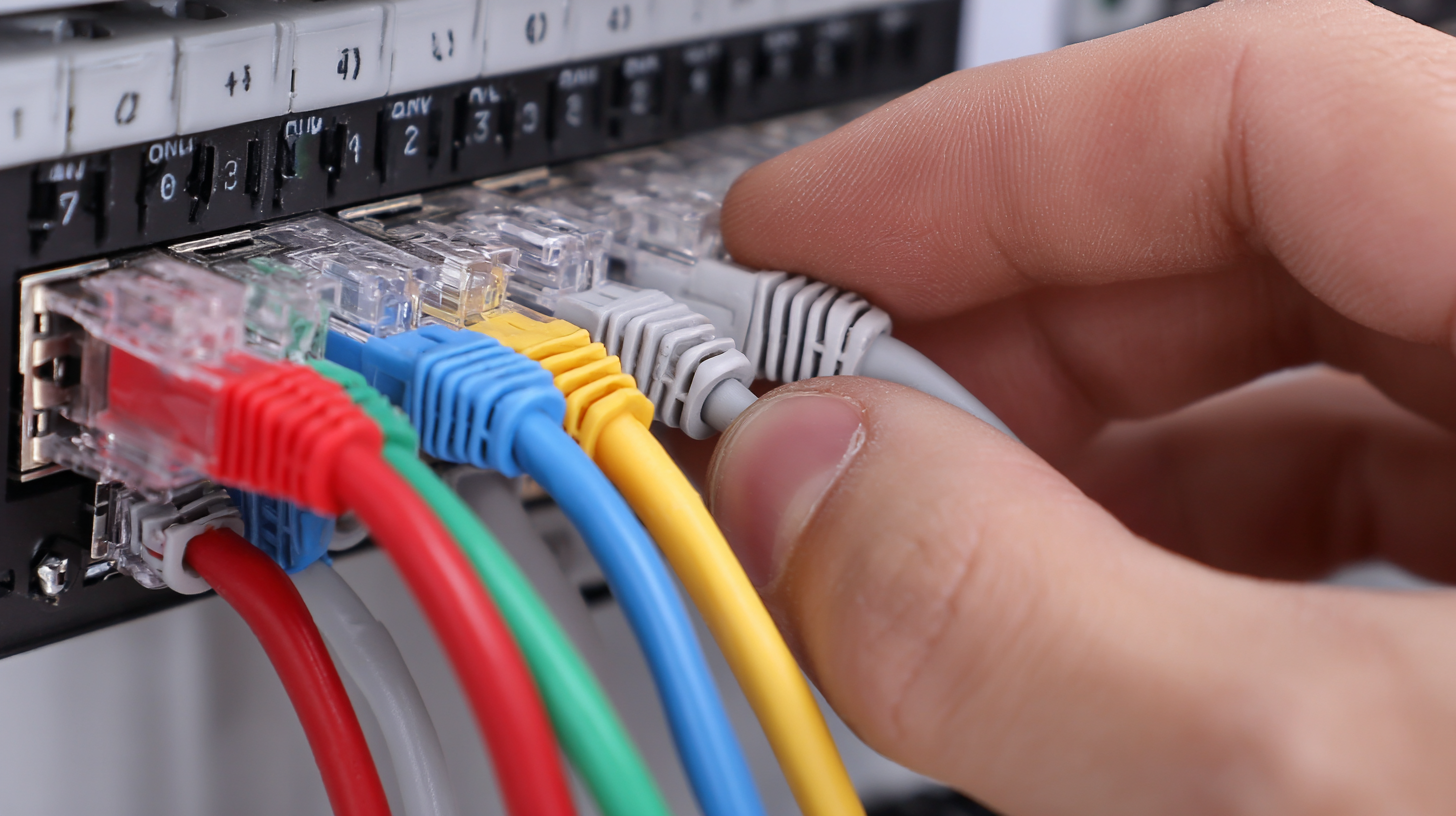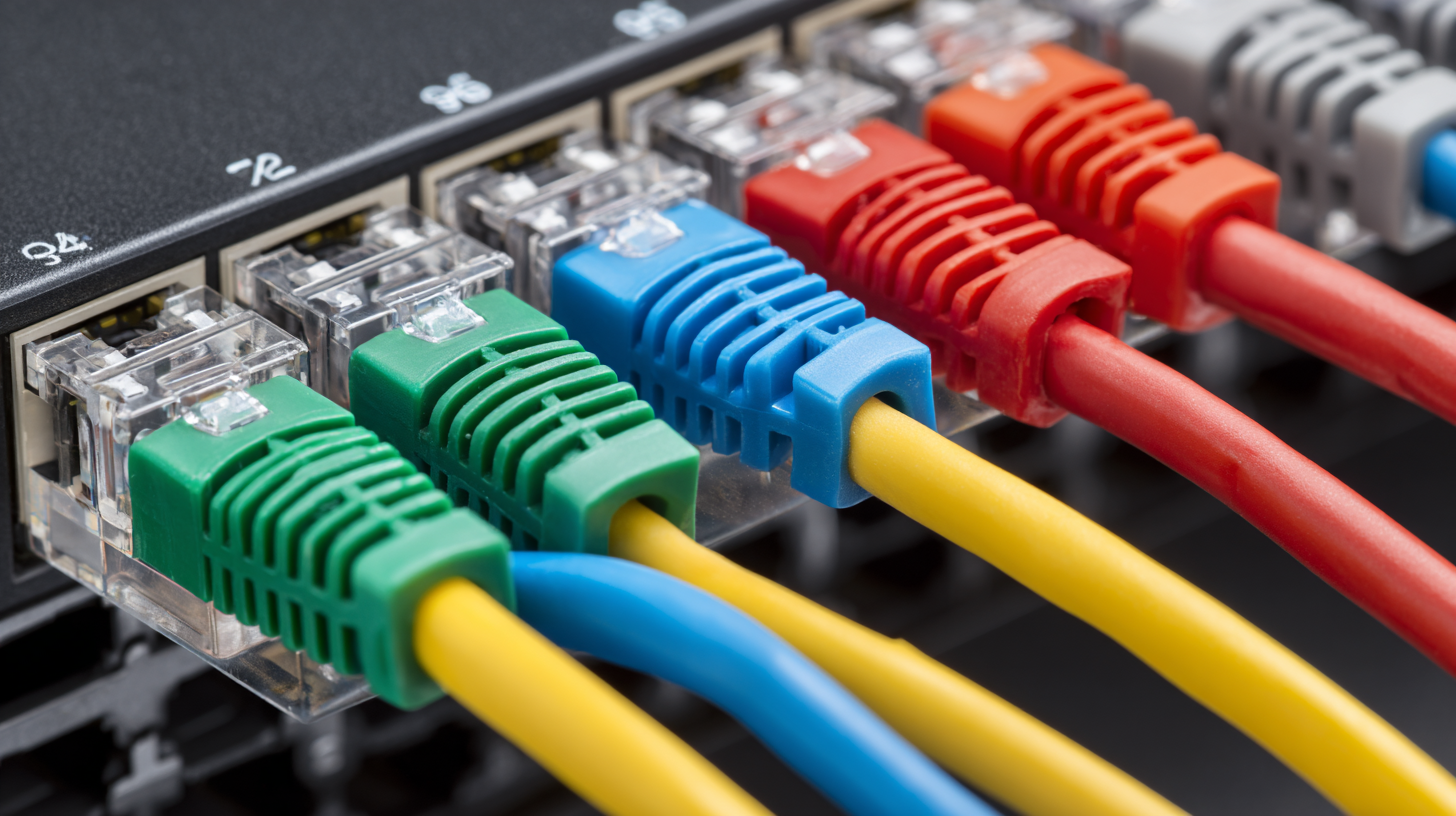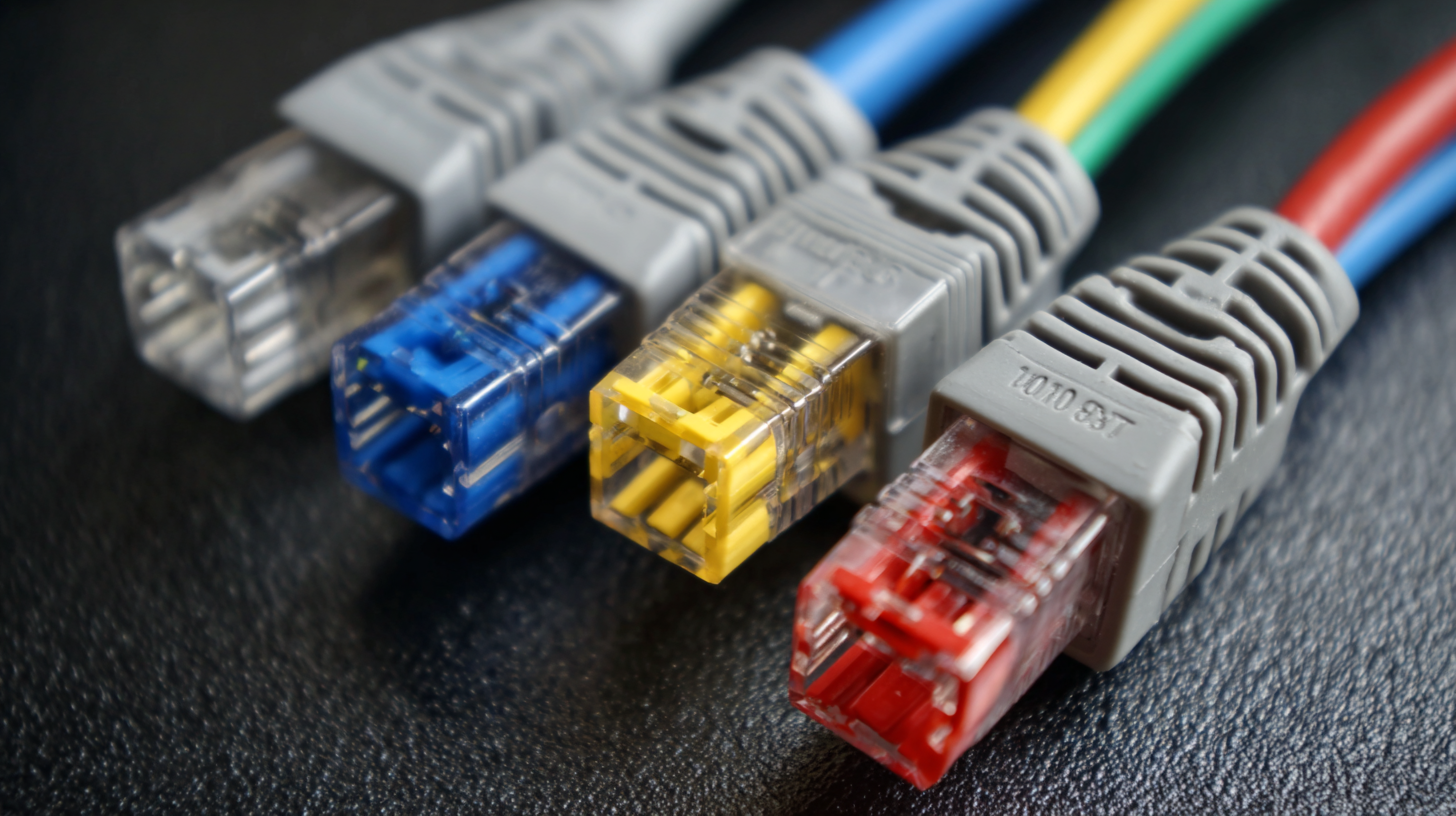Understanding RJ45 Wiring Types and Their Applications in Modern Networking
In today's rapidly evolving digital landscape, the significance of effective networking solutions cannot be overstated. As businesses increasingly rely on robust connectivity to enhance productivity, understanding RJ45 wiring has become paramount. According to the International Telecommunication Union (ITU), the global number of internet users is projected to reach 5.7 billion by 2025, emphasizing the growing demand for efficient networking infrastructure. RJ45 wiring, a standard for Ethernet networking, plays a critical role in this framework, supporting data transfer rates that can exceed 10 Gbps under optimal conditions. With various wiring types available, including T568A and T568B, the choice of configuration can significantly impact network performance and reliability. This guide will delve into the intricacies of RJ45 wiring types and their applications, providing insights essential for professionals seeking to optimize modern networking solutions.

Overview of RJ45 Wiring Types: T568A vs. T568B Comparison
When setting up a modern network, understanding RJ45 wiring types is crucial. The two primary wiring standards used are T568A and T568B, both of which facilitate Ethernet connections. While they serve the same functional purpose, the differences in their pin assignments can impact compatibility and performance in certain situations.
T568A is often favored for its alignment with the older AT&T 258A standard, making it a popular choice for residential installations and backward compatibility. Its pin configuration uses pairs of wires that help reduce crosstalk and interference, which is beneficial in terms of network stability. On the other hand, T568B has been widely adopted in commercial installations due to its prevalence in existing network infrastructures. The pinout differs slightly, as it swaps the positions of two pairs, leading to a distinctive wiring method that some believe enhances performance in specific applications.
Choosing between T568A and T568B is largely about context and existing equipment. Professionals often recommend sticking to one standard within a network to avoid confusion and connectivity issues, especially when integrating new hardware with an established setup. Understanding these wiring types not only informs better decisions but also ensures more reliable network performance in the long run.
Understanding RJ45 Wiring Types and Their Applications in Modern Networking
| Wiring Type | Pin Configuration | Application | Pros | Cons |
|---|---|---|---|---|
| T568A | 1, 2, 3, 6, 4, 5, 7, 8 | Residential and Commercial | Better performance in voice applications | Less commonly used than T568B |
| T568B | 1, 2, 3, 6, 4, 5, 7, 8 | Commercial Networks and Data Centers | Widely used in the industry | Not optimally configured for voice applications |
| 568A vs 568B | Different pair assignments | General Networking | Both can support Ethernet standards | Mixing standards can cause connectivity issues |
Key Applications of RJ45 Wiring in Residential and Commercial Networks
 RJ45 wiring is essential in both residential and commercial networks, serving as the backbone for reliable connectivity. In residential settings, RJ45 connectors are primarily used for Ethernet connections, supporting everything from home offices to entertainment systems. With the growing demand for high-speed internet and streaming services, understanding the various wiring types—such as T568A and T568B—can help homeowners optimize their networks for speed and efficiency.
RJ45 wiring is essential in both residential and commercial networks, serving as the backbone for reliable connectivity. In residential settings, RJ45 connectors are primarily used for Ethernet connections, supporting everything from home offices to entertainment systems. With the growing demand for high-speed internet and streaming services, understanding the various wiring types—such as T568A and T568B—can help homeowners optimize their networks for speed and efficiency.
In commercial environments, RJ45 wiring plays a critical role in creating robust networking infrastructures. Businesses rely on these connections for seamless communication, data transfer, and connectivity between devices. As organizations increasingly adopt Internet of Things (IoT) technologies and smart devices, the significance of proper RJ45 wiring becomes even more pronounced. The ability to support power over Ethernet (PoE) allows businesses to power devices like cameras and phones directly through the network cables, simplifying installation and enhancing network reliability. As networking needs continue to evolve, knowledge of RJ45 wiring types and their applications is key to building efficient residential and commercial networks.
Understanding PoE (Power over Ethernet) and Its Impact on RJ45 Wiring Choices
Power over Ethernet (PoE) has revolutionized the way we utilize RJ45 wiring, particularly in modern networking environments. PoE allows the delivery of both data and electrical power through the same cabling, significantly simplifying installations. According to a report by the IHS Markit, the PoE market is projected to reach $2.2 billion by 2025, reflecting a growing trend in deploying powered devices such as IP cameras, Wi-Fi access points, and VoIP phones in various business settings. This consolidation of functionality not only enhances operational efficiency but also reduces the need for additional electrical infrastructure.
Choosing the right RJ45 wiring type is crucial when implementing PoE. Different standards—such as IEEE 802.3af, 802.3at, and the latest 802.3bt—have varying maximum power output capabilities, with 802.3bt supporting up to 60W per port. This means that network administrators must carefully consider their wiring schemes, ensuring that cables like Cat5e or Cat6 can handle the power requirements without overheating. As businesses increasingly adopt smart technologies that rely on PoE, understanding these wiring choices and their implications becomes essential for ensuring reliable and efficient network performance.
Common Mistakes in RJ45 Wiring and How to Avoid Them for Optimal Performance
When it comes to RJ45 wiring, understanding common mistakes is crucial for ensuring optimal network performance. According to a study by the Telecommunications Industry Association (TIA), improper wiring techniques can lead to increased attenuation and crosstalk, ultimately reducing data transmission speeds by up to 50%. Among the frequent errors, incorrect pin assignments and excessive cable untwisting are the most prevalent. Each RJ45 connector comprises eight pins, and using the wrong wiring scheme, such as T568A instead of T568B, can create compatibility issues and degraded performance.

Moreover, the importance of maintaining proper twisting throughout the cable cannot be overstated. The original twist in the cable pairs is designed to cancel out electromagnetic interference. A report from the International Electrotechnical Commission (IEC) noted that untwisting cable pairs more than one centimeter before termination can significantly undermine this shield, leading to potential data loss and network disruptions. To ensure the integrity of your network, it's imperative to adhere strictly to wiring standards and performance specifications, avoiding these common pitfalls that could hinder your networking capabilities.
Future Trends in RJ45 Wiring: How Emerging Technologies are Shaping Networking Standards
As networking technology continues to advance, the RJ45 wiring standard is evolving to meet the demands of modern applications. Emerging technologies like 5G, IoT, and smart automation systems are influencing RJ45 wiring designs, leading to improved performance and efficiency. For instance, the shift towards higher data rates necessitates the use of Category 6 and 6A cables, which can support gigabit speeds and are critical for seamless connectivity in high-bandwidth environments.
Moreover, the integration of Power over Ethernet (PoE) capabilities is becoming increasingly prevalent, allowing devices like security cameras and access points to receive power through the same cable that transmits data. This trend not only simplifies installation but also enhances scalability in network infrastructures. As organizations begin to adopt these modern standards, understanding the applications and benefits of upgraded RJ45 wiring will become essential for ensuring optimal performance in an ever-connected world.
RJ45 Wiring Types and Their Applications
Related Posts
-

7 Essential Tips for Choosing the Best Fiber Optic Termination Kit for Your Projects
-

5 Digital Insights and Tips for Choosing the Right Optic Cable to Enhance Your Network Performance
-

Understanding the Consequences of RJ45 Tester Misconfigurations in Network Performance
-

Exploring Innovative Alternatives for Effective Wire Management Solutions
-

How to Choose the Right Coax Adapters for Your Connectivity Needs
-

How to Select the Best RJ45 Cable Tester for Your Networking Needs: A Comprehensive Guide






